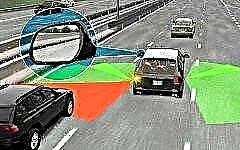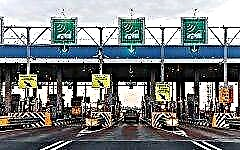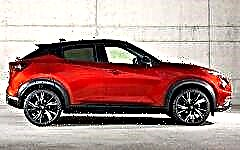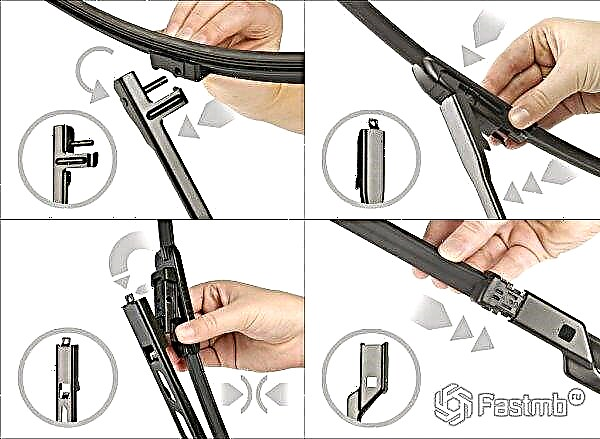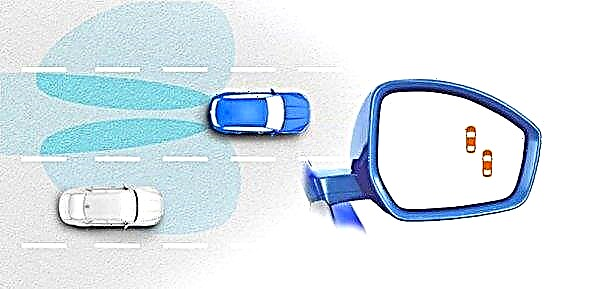The maneuver of the car, subject to all the rules, often does not pull any consequences. Consider a restructuring assistance system.

The content of the article:
- Variety of systems
- Main components
- Principle of operation
Each driver, before changing lanes to another or making a maneuver in an unpredictable situation, always looks around and at the mirrors. But the conditions are not always ideal, and the fact that there are dead zones in every car is no secret and cannot be ruled out in any way.
It often happens that during a maneuver, the driver was not convinced of safety and thus provoked an accident. As a result, there may be small scratches on the car, but it is still unpleasant. To help the driver, engineers have developed a lane change assistance system or, in another way, a blind spot monitoring system. It was the latter name that became more widespread.
Different systems in different manufacturers

These days, it's hard to come across a car that isn't equipped with a blind spot monitoring system. In many countries in Europe and North America, this system is mandatory for installation in a security package.
The main purpose of the system is to control the presence of vehicles in the so-called blind spots. These are certain stripes around the circle of the car, which are not visible in the mirror in any way, except if you turn your head in a circle.
Different automotive manufacturers refer to the system differently:
- Volvo named the system BLIS;
- Ford - BLISTM;
- For Porsche, this is SWA (Spurwechselassistent);
- BMW - LCW (Lane Change Warning);
- Audi - Side Assist.
This is not yet a complete list of the names of the assistive system in different manufacturers. The European Safety Committee has recognized the Side Assist system from Audi as one of the best as of 2010.
What does the notification system consist of?

The list of parts may vary depending on the make and model of the vehicle. Side Assist from Audi is based on constant monitoring of blind spots around the car, in front, behind and thanks to various sensors, sensors. Regardless of whether the car driver changes lanes or not, the system will inform the driver about an obstacle in the blind spot.
The list of the main parts of the blind spot monitoring system includes:
- the on / off button of the monitoring system, often it is a button on the handle of the turn switch;
- sensors and radars in side mirrors;
- control unit with logic;
- side mirrors;
- indicator (light) on the instrument panel.
Also, in more complex systems, they note the presence of radars in the radiator grille (for example, modern Mercedes S Class), and on the rear bumper, more often at the corners of the bumper. It is this part that is most often invisible in the rear-view mirrors.
How the blind spot monitoring system works

The entire start of a vehicle tuning assistance system begins with sensors, radars or ultrasonic sensors. They emit radio waves into the blind spots of the car, and as a result receive a special response in the form of distorted radio waves. Now the information is digitized and transmitted to the control unit, where, on the basis of the received data, the unit processes and gives the result whether or not there is a car in this zone. In this way, information is removed and processed from all sensors that relate to this system. Control units often process and monitor moving objects, they can also recognize stationary objects, thereby eliminating them as interference. In case of great danger, a corresponding light on the instrument panel comes on as an indicator of the level of danger.
The signal lamp can operate in two modes. The first option only blinks when the driver changes from one lane to another lane, while the object is in the blind zone. If the light is on continuously, then the car is in the blind spot and is following you.

The system works differently in different manufacturers, for example, Audi's Side Assist starts to work at a speed of 60 km / h and above. Often there may be less speed, the system reacts to the turn switch.
BLIS uses digital cameras instead of radars with high frame rates per minute. But the disadvantage of such shooting is the imperfection of shooting in bad weather conditions, for example, in fog, especially at night.
BSIS system is activated by a special button on the front panel. That is, it does not support automatic switching on, and works at a speed of 10 km / h. In addition to the indicator light signal, the RVM system also gives a sound signal, which is very important for most drivers, because there are times on the road when there is simply no way to come off the dashboard or sensors on the side mirrors.
We can say that in the active safety of the car, the blind spot monitoring system or the assistance system during the restructuring of the car plays an important role. At the cost of buying a car from the salon, the system will cost about $ 350 and you should not spare this money, in the future it will help you out more than once. For $ 200- $ 300, you can buy a non-factory set and install it yourself.



